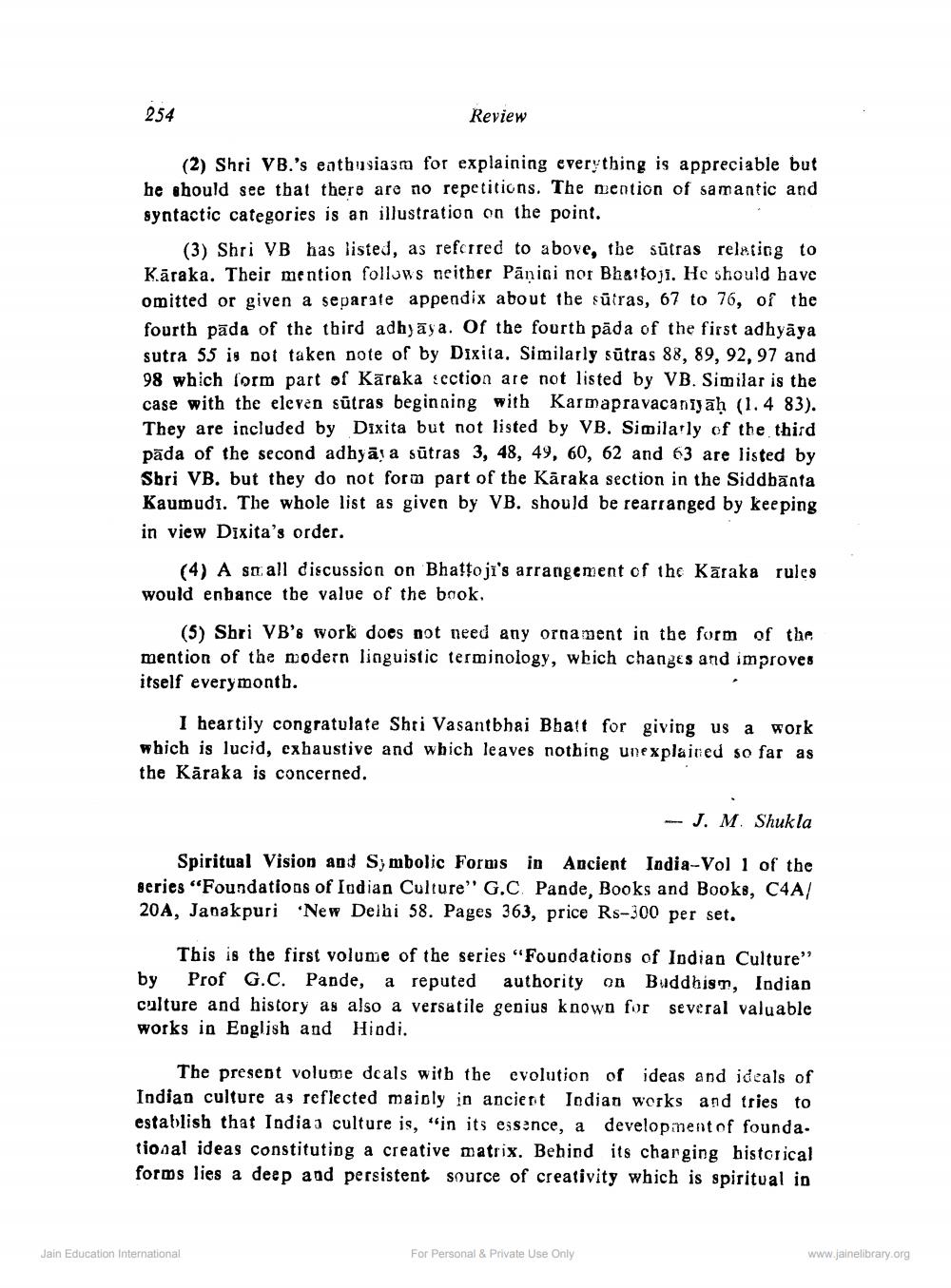________________
254
Review
(2) Shri VB.'s eathusiasm for explaining everything is appreciable but he should see that there are no repetitions. The mention of samantic and syntactic categories is an illustration on the point.
(3) Shri VB has listed, as referred to above, the sūtras relating to Karaka. Their mention follows neither Pânici nor Bhaitoji. He should have omitted or given a separate appendix about the sūtras, 67 to 76, of the fourth pada of the third adhyāya. Of the fourth pada of the first adhyaya sutra 55 is not taken note of by Dixita. Similarly sūtras 88, 89, 92, 97 and 98 which form part of Karaka section are not listed by VB. Similar is the case with the eleven sūtras beginning with Karmapravaca niyāḥ (1.4 83). They are included by Dixita but not listed by VB. Similarly of the third pāda of the second adhyāya sūtras 3, 48, 49, 60, 62 and 63 are listed by Sbri VB. but they do not form part of the Kāraka section in the Siddbānta Kaumudi. The whole list as given by VB. should be rearranged by keeping in view Dixita's order.
(4) A small discussion on Bhattoji's arrangement of the Kāraka rules would enbance the value of the book,
(5) Shri VB's work does not need any ornament in the form of the mention of the modern linguistic terminology, which changes and improves itself everymonth.
I heartily congratulate Shri Vasantbhai Bhatt for giving us a work which is lucid, exhaustive and which leaves nothing unexplained so far as the Kāraka is concerned.
-
J. M. Shukla
Spiritual Vision and Symbolic Forms in Ancient India-Vol 1 of the series "Foundations of lodian Culture" G.C. Pande, Books and Books, C4A/ 20A, Janakpuri New Delhi 58. Pages 363, price Rs-300 per set.
This is the first volume of the series "Foundations of Indian Culture" by Prof G.C. Pande, a reputed authority on Buddhism, Indian culture and history as also a versatile genius known for several valuable works in English and Hindi.
The present volume deals with the evolution of ideas and ideals of Indian culture as reflected mainly in ancient Iodian works and tries to establish that India a culture is, “in its essence, a development of founda. tional ideas constituting a creative matrix. Behind its charging bistorical forms lies a deep and persistent source of creativity which is spiritual in
Jain Education International
For Personal & Private Use Only
www.jainelibrary.org




